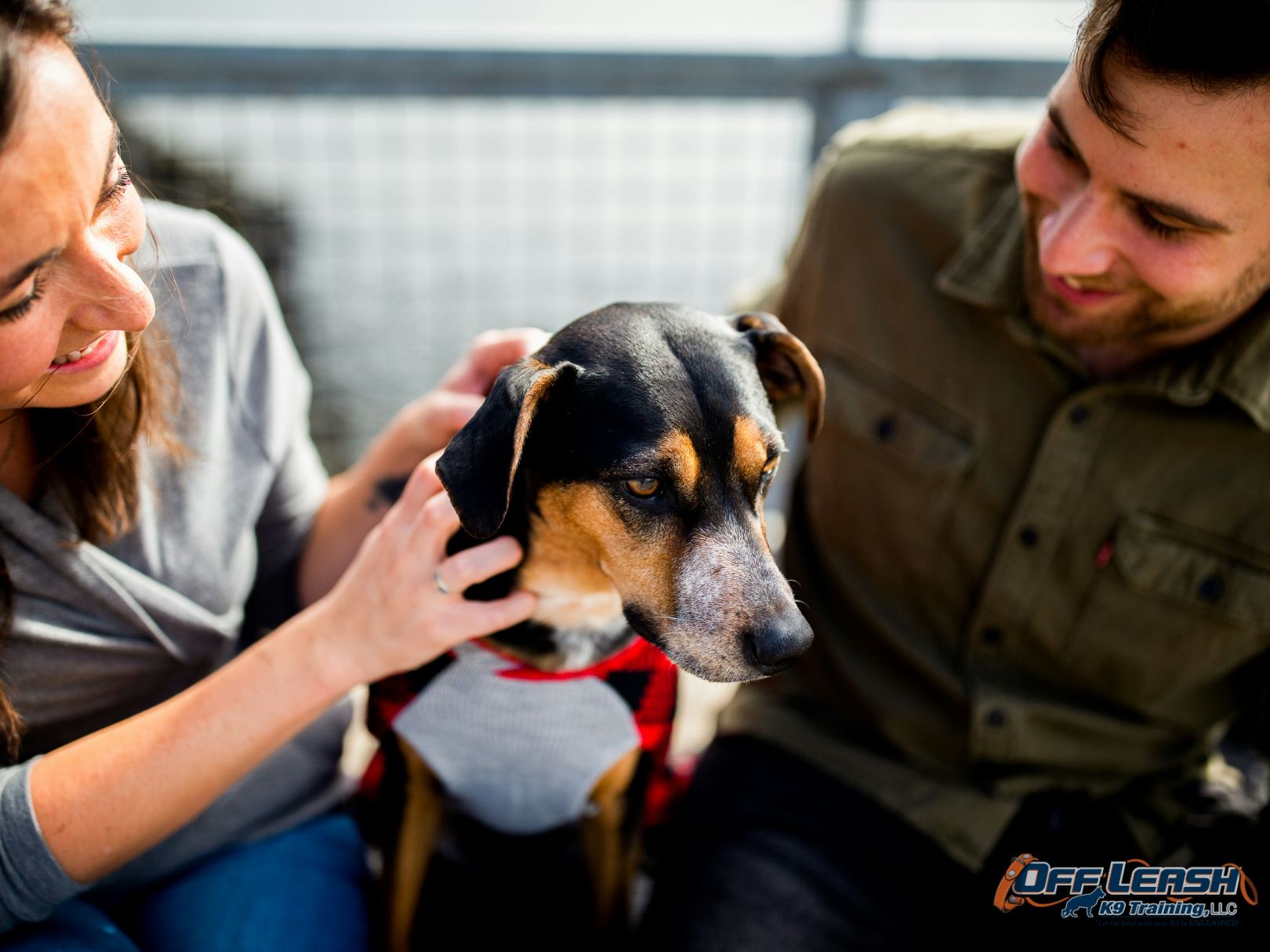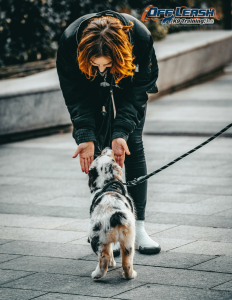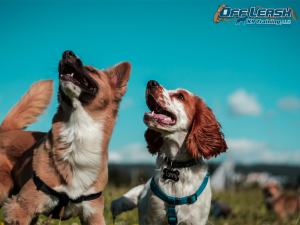Tips for Setting Boundaries and Saying No to Strangers Petting Your Dog: Learn how to establish clear boundaries with strangers to protect your dogs well-being and ensure a positive and respectful environment for both your dog and those around you.
Introduction to Setting Boundaries and Saying No to Strangers Petting Your Dog
The bond that forms between dogs and their owners is unparalleled, marked by a deep sense of trust, love, and mutual respect. This unique relationship, however, also necessitates the establishment of clear boundaries to safeguard the well-being and comfort of both parties. In many social settings, it’s quite common for strangers to feel an impulse to pet your canine companion, drawn by their charm and friendliness. While such gestures are often well-intentioned, they might not always be welcome by either the dog or their owner for a variety of reasons. The importance of setting boundaries with strangers cannot be overstated; it serves to prevent uncomfortable situations that could lead to stress or anxiety for your dog. Additionally, these boundaries help in ensuring your pet’s safety and maintaining a serene environment during public outings.
Understanding and respecting an individual dog’s comfort level with unfamiliar people is crucial. Just like humans, dogs have their own unique personalities and boundaries. Some may relish the attention from new friends, while others may find it intimidating or even frightening. Being cognizant of these differences and establishing clear boundaries accordingly plays a pivotal role in protecting your dog’s mental and emotional health. It ensures that interactions with strangers are always positive and stress-free, fostering a safe and enjoyable social experience for everyone involved.
The Importance of Setting Boundaries for Your Dog
 Why Boundaries Are Crucial
Why Boundaries Are Crucial
Establishing boundaries is crucial in preventing unwanted stress or anxiety in dogs, especially when they find themselves in unfamiliar situations. An anxious or stressed dog may not react predictably, and in some cases, this can lead to unwanted behavior or even aggression. Dogs often exhibit body language cues to indicate discomfort, such as tucking their tail, lowering their head, or trying to move away from the person trying to pet them. Recognizing and respecting these signals by setting clear boundaries can protect your dog’s emotional well-being and foster a sense of security and trust between you and your furry companion.
Recognizing Individual Dog Preferences
Understanding and respecting your dog’s individual preferences regarding interactions with strangers is key. While some dogs might relish attention from anyone willing to offer a pat or a kind word, others may feel anxious, threatened, or simply prefer not to be touched by unfamiliar people. Being attuned to your dog’s body language will help you identify when they’re uncomfortable and need you to intervene on their behalf. Training and socialization also play significant roles in shaping how a dog responds to strangers. Consistently reinforcing boundaries through training helps ensure your dog knows how to behave in social settings, and strangers respect their space.
Communicating Effectively to Decline Strangers
Verbal and Non-Verbal Communication Strategies
Navigating the interaction with strangers who wish to pet your dog requires a blend of clear verbal communication and discernible non-verbal cues. When verbally expressing your preference, it’s crucial to adopt a tone that is both calm and assertive. This approach ensures that your message is delivered effectively without causing offense. Phrases such as “Please, don’t pet my dog, she’s currently in training” or “He’s not very comfortable with new people yet, thank you for understanding,” offer a polite yet firm boundary. These statements not only communicate your request but also provide a reason, making it easier for the stranger to respect your wishes.
On the non-verbal front, body language plays a significant role. Positioning yourself between your dog and the stranger serves as a physical barrier, reinforcing your verbal message. Additionally, maintaining eye contact with your dog rather than the stranger can subtly indicate that your attention is focused on your pet’s well-being, thereby discouraging the approach. Such non-verbal cues, combined with verbal communication, contribute to a comprehensive strategy that respects both the stranger’s intentions and your dog’s comfort.
Tools and Accessories to Signal “No Petting”
Visual Cues for Boundaries
In today’s pet-friendly society, navigating public spaces with your dog while maintaining their comfort and safety can be challenging. However, there are innovative tools and accessories designed to communicate your dog’s need for space, effectively setting boundaries with strangers. Items such as “Do Not Pet” patches, vests, or bandanas are invaluable in this regard. These accessories act as clear, immediate visual signals, alerting others from a distance that your dog should not be approached or touched without explicit permission. This preemptive communication can greatly reduce the need for verbal confrontations and ensures that your dog remains undisturbed, whether they are in training, recovering from surgery, or simply not comfortable with unsolicited attention.
Furthermore, incorporating these visual cues into your dog’s gear can be a proactive step toward educating the public about the importance of respecting an animal’s personal space. For example, utilizing a yellow ribbon tied around your dog’s leash is a recognized symbol indicating that a dog needs more space from both people and other pets. This not only aids in preventing unwanted interactions but also fosters a culture of mindfulness and consideration among pet owners and lovers alike.
Educating Others on Respecting Your Dog’s Boundaries
Importance of Public Awareness
The key to fostering a culture of respect and understanding around dogs and their boundaries lies in educating the public on the importance of seeking permission before engaging with someone’s pet. This education is not just about promoting responsible pet ownership; it’s about ensuring the safety and well-being of both dogs and people. By sharing knowledge on canine behavior and the signals dogs use to communicate discomfort or fear, we can help others recognize that not every dog is comfortable with stranger interaction. Informing people that a dog’s demeanor can drastically change when approached by someone unfamiliar and that the owner’s consent is paramount can significantly reduce unwelcome encounters.
Furthermore, engaging in respectful and informative conversations with individuals who express interest in petting your dog presents an opportunity to educate them on why it’s crucial to respect a pet’s personal space. For instance, explaining that your dog is currently undergoing training and that unsolicited petting can disrupt this process can be an eye-opening revelation for many. This approach not only protects your dog but also cultivates a community that values and upholds the principles of responsible and considerate pet interaction. By taking these steps, we contribute to a safer and more respectful environment for all pets and their owners.
Handling Situations Where Strangers Disregard Boundaries
Dealing with Boundary Violations
Even with clear communication and visible cues, there will inevitably be instances where individuals overlook or outright ignore the boundaries you’ve set regarding interaction with your dog. In these scenarios, it’s crucial to remain calm and composed. A calm demeanor helps prevent the situation from escalating and ensures your dog remains at ease amidst potential stress. Should a stranger persist in their attempts to pet your dog despite your explicit request not to, it’s important to assertively restate your boundary. Phrases like “Please, I’ve asked you not to pet my dog for his safety and your own” can reinforce your stance without escalating tension.
If the individual continues to disregard your wishes, the next step is to physically distance yourself and your dog from the person. Doing so not only protects your dog from unwanted stress but also conveys the seriousness of your request. Removing your dog from the situation demonstrates that you are in control and prioritizes your dog’s well-being above a stranger’s desire for interaction. In cases where someone repeatedly ignores your dog’s boundaries to the point of harassment, it may become necessary to involve local authority figures or animal control. They can offer support and ensure that your rights, and more importantly, your dog’s safety, are upheld. Remember, your primary responsibility is to your dog, and setting boundaries is a key aspect of ensuring their happiness and security.
Conclusion: Safeguarding Your Dog’s Well-being with Clear Boundaries
Creating and upholding distinct boundaries for your dog in the face of strangers’ desires to interact with them is an indispensable part of being a conscientious pet owner. Not only does it secure your dog’s safety and ensure their comfort in various social situations, but it also mitigates the likelihood of misunderstandings or disputes that could arise from unsolicited petting. By employing a combination of clear communication, visual signals such as ‘Do Not Pet’ vests or harnesses, and taking the time to educate others on the importance of respecting these boundaries, you foster an atmosphere of mutual respect and understanding. This approach not only benefits your dog but also contributes to a more informed and considerate community of pet lovers and the public alike.
Moreover, it’s essential to recognize that asserting boundaries is an affirmative action aimed at protecting your dog’s emotional and physical well-being. It emphasizes the significance of mindful interaction with animals and underscores the responsibility we have towards our canine companions. At Off Leash K9 Training of El Paso, TX, we understand the importance of these principles and offer specialized training programs designed to assist you and your dog in navigating social interactions confidently and safely. By equipping your dog with the skills to handle various social scenarios and reinforcing your ability to assert boundaries effectively, we strive to enhance the bond between you and your pet, ensuring a happier, stress-free life together. Explore how our expertise can benefit you by visiting Off Leash K9 Training of El Paso, TX today.


 Why Boundaries Are Crucial
Why Boundaries Are Crucial

